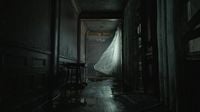Capcom, a name synonymous with iconic franchises like Street Fighter, Resident Evil, and Monster Hunter, has long been a cornerstone of the video game industry. Yet, for those who have followed the company since its earlier days, Capcom’s story is far more diverse than its current blockbuster hits might suggest. The company’s legacy is dotted with bold experiments and genre-defining releases, none more beloved—or more neglected—than its classic JRPG series, Breath of Fire.
First arriving on the Super Nintendo in 1993, Breath of Fire entered a crowded field of role-playing games. According to ComicBook.com, it may have lacked the immediate flash of its contemporaries, but it more than compensated with heart, mysticism, and a unique mythology centered around dragons and gods. The series’ protagonist, Ryu (not to be confused with the Street Fighter character), was at the center of each game, reincarnating across entries and embarking on quests that delved into themes of destiny, identity, and sacrifice.
As the series matured, so did its storytelling and presentation. The PlayStation era marked a turning point for Breath of Fire, with Capcom refining its painterly, hand-drawn visuals and deepening its emotional storytelling. The games became known for their introspective tone and complex character arcs, a departure from the bombast often found in rival RPGs. "Breath of Fire felt alive, melancholic, and mystical all at the same time," ComicBook.com writes, capturing the unique atmosphere that set the series apart.
The 1990s and early 2000s were a golden age for Japanese role-playing games, with titans like Final Fantasy and Dragon Quest dominating the landscape. Breath of Fire carved out its own niche by focusing on smaller, more personal narratives—stories about rescuing a sister or clearing a friend’s name, often set against the backdrop of world-altering events. According to ComicBook.com, this approach resonated with fans who were looking for something more grounded and emotionally resonant amid the genre’s growing cinematic ambitions.
By the time Breath of Fire IV launched in 2000, Capcom’s series was considered a worthy rival to the genre’s biggest names. Its painterly art style, haunting music, and morally ambiguous storytelling earned it a seat at the table with the likes of Final Fantasy and Dragon Quest. For many fans, Breath of Fire wasn’t just another JRPG—it was a defining part of their gaming identity.
But every golden age has its end. In 2002, Capcom released Breath of Fire: Dragon Quarter for the PlayStation 2, a bold departure from previous entries. The game’s radically different gameplay and narrative approach split the fan base. Some players appreciated the experiment, but many longtime fans felt it strayed too far from what made the series special.
After Dragon Quarter, the series went dormant for over a decade. When Capcom finally returned to the franchise, it did so with Breath of Fire 6, a mobile-only title that abandoned much of what fans loved. The new game simplified systems, introduced energy timers and microtransactions, and stripped away the deep character arcs and turn-based battles that had defined the series. The backlash was swift and fierce. As ComicBook.com reports, Breath of Fire 6 shut down after just two months, a stark testament to the perils of abandoning a beloved formula in pursuit of new trends.
The mishandling of Breath of Fire in the years following the PlayStation 2 era is often cited as one of Capcom’s great missteps. Rather than building on the series’ strengths, the company attempted to repackage it for a mobile audience, sacrificing its identity in the process. ComicBook.com laments, "To destroy the series’ identity the way it did was wrong." The sentiment is echoed by many fans who still hold out hope for a revival—perhaps in the form of a remaster or a collection of the original games, as other publishers have done with their classic properties.
While Breath of Fire languishes in obscurity, Capcom’s current lineup continues to dominate headlines. At this year’s New York Comic Con, the company made waves with news about its flagship survival horror series, Resident Evil. Although there were no new details about the highly anticipated Resident Evil Requiem during the Capcom Presents event, the publisher confirmed that pre-orders for the sequel will open on October 29, 2025, in the United States. This announcement, reported by ComicBook.com, has already stirred excitement among fans, with more than one million wishlists just weeks after the game’s initial reveal.
Resident Evil Requiem is set to launch on February 27, 2026, for PlayStation 5, Xbox Series X/S, PC, and Nintendo Switch 2. The pre-order period will also coincide with a special video celebrating the Resident Evil franchise, though Capcom has clarified that it won’t feature new gameplay for Requiem. Still, speculation is running rampant, especially regarding the possible return of fan-favorite character Leon S. Kennedy, who has yet to be officially confirmed for the new installment.
Given Capcom’s recent pricing strategies for major releases like Dragon’s Dogma 2 and Monster Hunter Wilds, industry watchers expect Resident Evil Requiem to retail for $69.99. The anticipation is palpable, fueled by the franchise’s enduring popularity and Capcom’s track record of delivering polished, high-stakes horror experiences.
The contrast between Capcom’s treatment of Resident Evil and Breath of Fire is striking. One franchise is riding high on a wave of anticipation, with new content, celebrations, and a clear roadmap for the future. The other remains in limbo, its legacy cherished by longtime fans but largely ignored by its creator. The situation raises questions about how companies decide which properties to nurture and which to leave behind—an all-too-common dilemma in the fast-moving world of video games.
Yet, as nostalgia-driven remasters and revivals continue to find success across the industry, hope remains that Capcom might one day revisit Breath of Fire with the care and respect it deserves. As ComicBook.com suggests, "All it would take is a remaster of the first game, or even a rerelease of the first three games with some quality-of-life features." Such a move would not only satisfy a loyal fan base but also reaffirm Capcom’s commitment to its own rich history.
For now, fans of both Resident Evil and Breath of Fire watch and wait—one group counting down the days to a blockbuster release, the other holding onto memories of a series that once burned bright in Capcom’s lineup.




